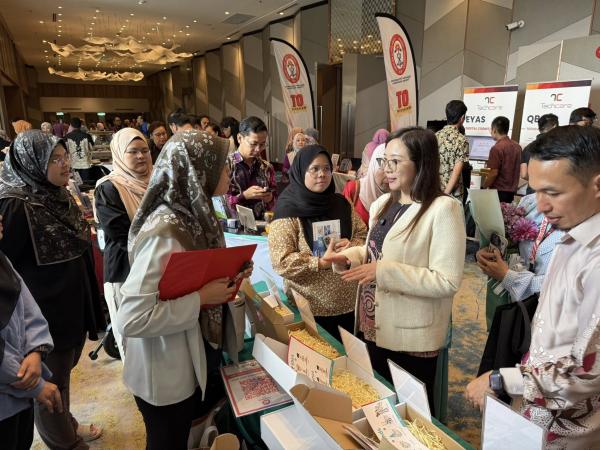By Media Selangor Team
KLANG, May 8 — Selangor is exploring collaborations with the Malaysian Occupational Therapy Association (OT Malaysia) to boost the public health ecosystem.
State executive councillor for public health and environment Jamaliah Jamaluddin said these partnerships can enhance inclusivity and responsiveness through joint initiatives under her portfolio.
She said that as a start, the Selangor State Health Department (JKNS) has been urged to collaborate with OT Malaysia on rehabilitation programmes across Selangor.
“I believe occupational therapists can play a key role in advocacy and promoting the services they offer, as some members of the community may not know how to access treatment and rehabilitation.
“Occupational therapists do more than restore function — they restore hope, unlock potential, and help people rediscover meaning in their lives. That is the true strength of this profession,” she said when officiating the Malaysian Occupational Therapy National Conference (MOTNC) 2025 in Klang today.
The event was organised by OT Malaysia in collaboration with the Kuala Lumpur and Putrajaya Federal Territories Health Department and Kuala Lumpur Hospital.
Among those present were MOTNC 2025 chairman Dr Mohamad Qayum Mohamad Sabri, OT Malaysia president Dr Ahmad Zamir Che Daud, and Health Ministry occupational therapy profession head Nora Hamid.
In her speech, Jamaliah said Selangor supports all efforts and initiatives to strengthen public health, noting that the administration has introduced several programmes to enhance the overall public health ecosystem.
“Among them is the introduction of an early mental health intervention programme known as Selangor Mental Sihat, which includes several components such as the Sehat Hub Counsellor Programme, Sehat Helpline, and Bicara Hati segments with counsellors or psychologists aired on SelangorFM.
“These initiatives highlight topics related to emotional and mental well-being,” she said.
She also stressed the urgent need to increase the number of occupational therapists in the country to meet growing demand, especially as the ageing population grows, and to support people with chronic illnesses, mental health issues, and special needs.
“With the current ratio standing at just one occupational therapist for every 10,000 people, we are still far behind countries like Japan (1:100) and the United States (1:5,000),” she said.
In this regard, Jamaliah urged intensified efforts, such as training more students, strengthening career pathways, expanding service opportunities, and recognising the vital contributions of occupational therapists to community well-being.




